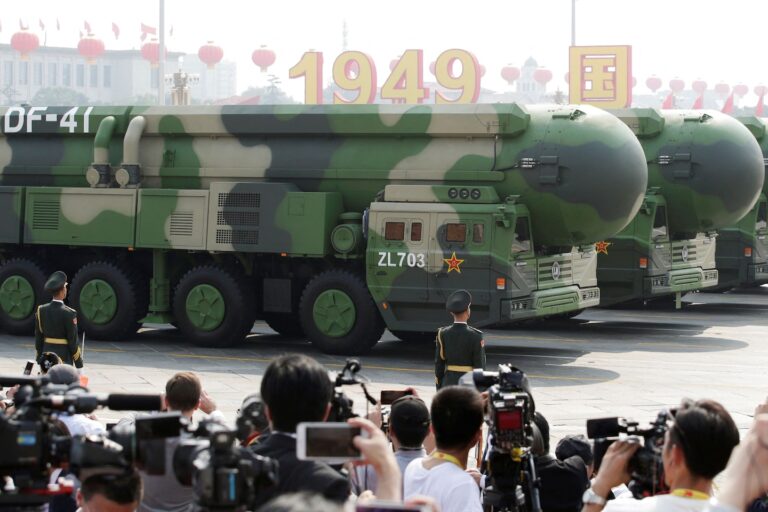State Department spokesman Matthew Miller called the decision “disappointing” and said Washington would continue to strengthen the security of allies and partners in the region in the face of threats from China.
“China has chosen to follow Russia’s lead in arguing that it cannot pursue arms control efforts amid other challenges in bilateral relations. We believe this approach undermines strategic stability. It increases the risks of arms race dynamics,” he said at a regular news conference on Wednesday.
China’s announcement comes amid uncertainty over U.S. policy toward Taiwan ahead of the November election. Former president and Republican candidate Donald Trump on Tuesday questioned longstanding U.S. policy of supplying arms to Taiwan, a democratic and self-governing island claimed by China.
In an interview with Bloomberg Businessweek, Trump accused “enormously wealthy” Taiwan of swindling America out of its role in computer chip manufacturing and suggested it “should pay for our defense.” Trump said Taiwan “hasn’t done anything” for the United States.
The United States has a long-standing policy of providing weapons and training to Taiwan, and the Biden administration and U.S. lawmakers from both parties have sought to expand that ties in recent years.
In 2022, the U.S. Congress authorized the U.S. government to spend $2 billion per year on Taiwan’s security from 2023 to 2027, and in April this year approved $2 billion in security grants for the Asia-Pacific region as part of a larger supplemental national security spending bill.
Lawmakers and administration officials also pledged to speed up long-overdue arms sales to Taiwan, including a critical upgrade to the island’s fleet of F-16 fighter jets. Last month, the State Department approved new sales of missiles and drones worth an estimated $360 million.
All of this has drawn fierce criticism from Beijing. Chinese President Xi Jinping has vowed to seize Taiwan by force if necessary, and the People’s Liberation Army has conducted a series of escalating military drills around Taiwan in recent years.
The Biden administration oversaw an extraordinary meeting between the two countries’ top nuclear weapons officials in November as part of a broader move to reopen high-level communication channels between Beijing and Washington. Some Republican lawmakers have criticized the new dialogue, accusing the White House of going soft on China, but the administration has argued that communication, especially between the two countries’ militaries, is essential to managing the threat of conflict.
“The goal wasn’t to whitewash differences. It was to address misunderstandings and miscommunications and avoid any big surprises,” U.S. National Security Advisor Jake Sullivan said in January about the reason for the meeting with Beijing at a Council on Foreign Relations event.
But China’s refusal to continue engaging on proliferation issues over U.S. arms sales to Taiwan as Biden heads into a shaky election highlights the limits of the scope of that engagement.
“[T]”The Chinese side has decided to postpone discussions with the United States on new negotiations on arms control and non-proliferation. The responsibility lies entirely with the United States,” Lin said.
U.S. officials had suggested earlier this year that Beijing’s efforts were weakening, but the foreign ministry statement was China’s first public acknowledgement that talks had stalled.
In March, Secretary of State Bonnie Jenkins told a Senate Foreign Relations Committee hearing that while initial talks had been promising, Beijing had rejected further meetings and had not provided a “substantive” response to Washington’s risk-reduction proposals.
She said China’s rapid buildup of nuclear warheads, along with Russia’s own substantial nuclear arsenal, raised concerns that the United States could soon find itself facing “two expansive and significantly militarized peers.”
A Pentagon report released last year said China has more than 500 nuclear warheads and that number is expected to double by 2030. The U.S. nuclear arsenal is roughly The Federation of American Scientists estimates there are 3,700 nuclear warheads.

